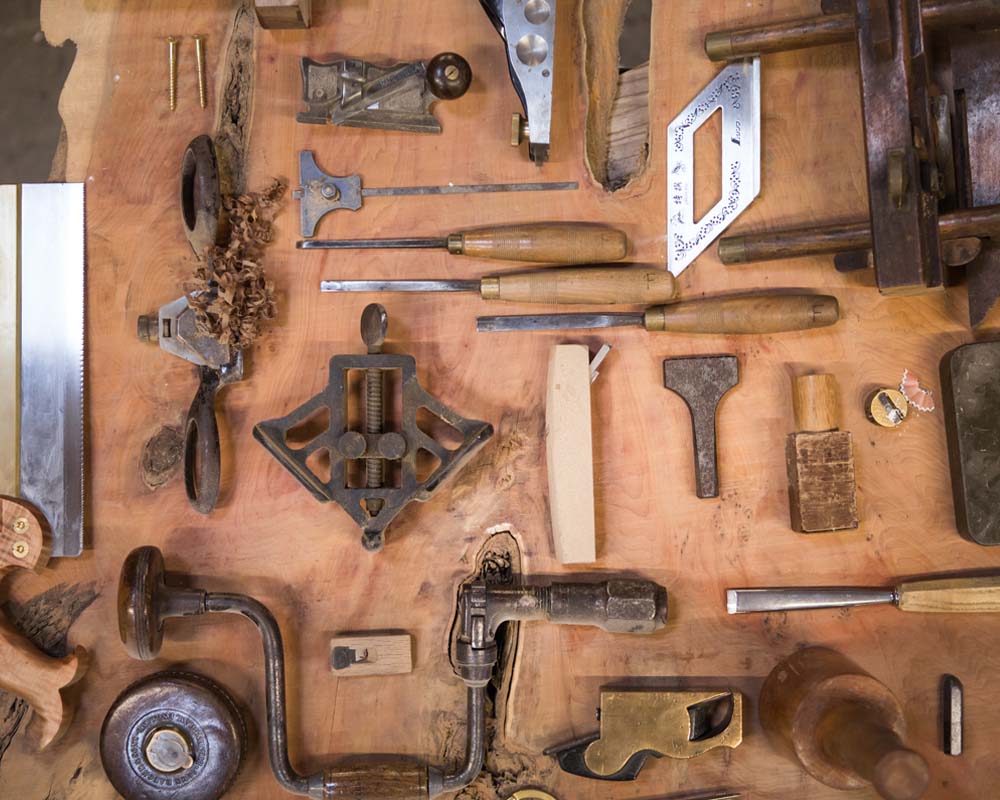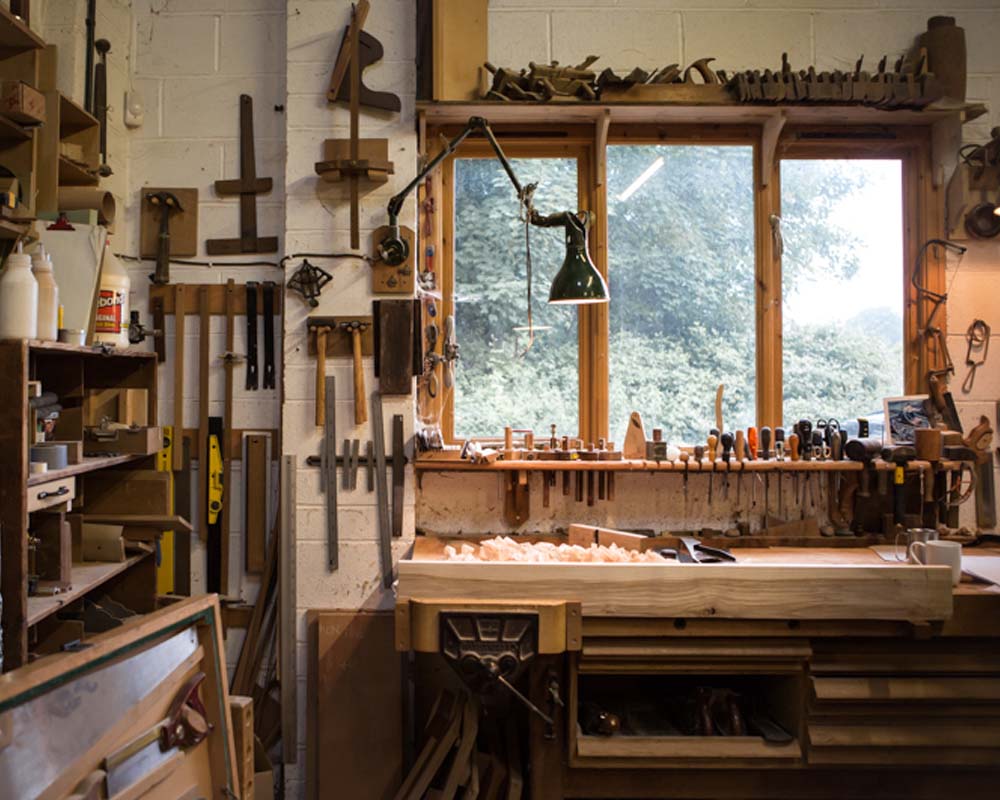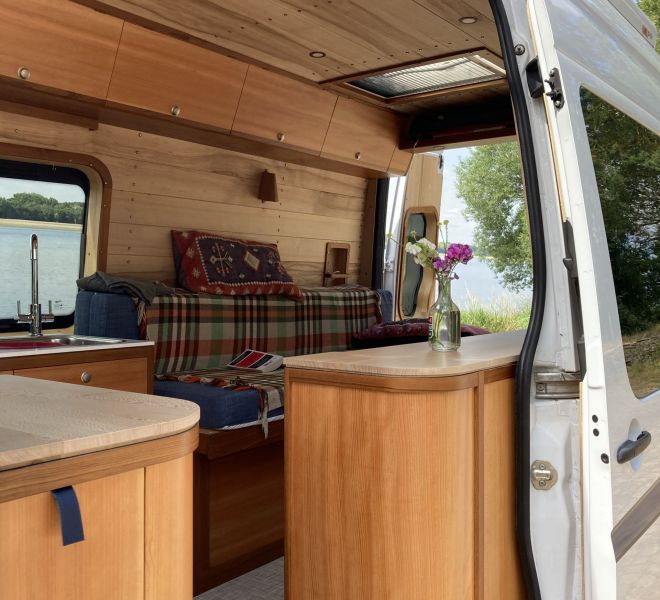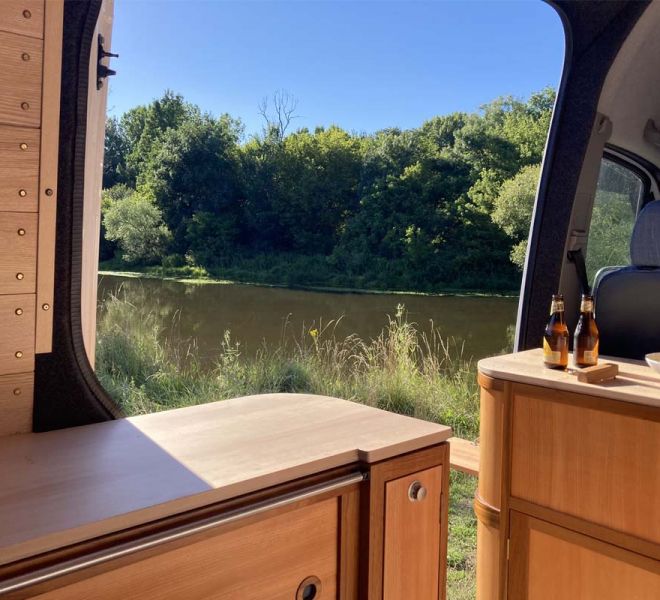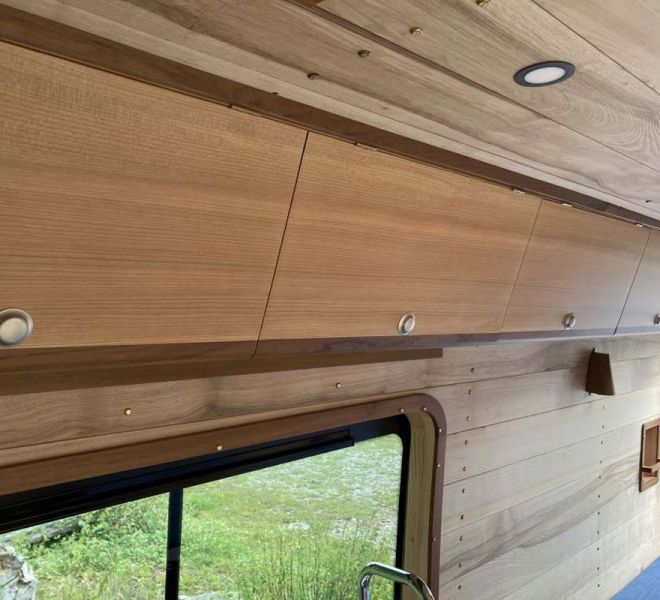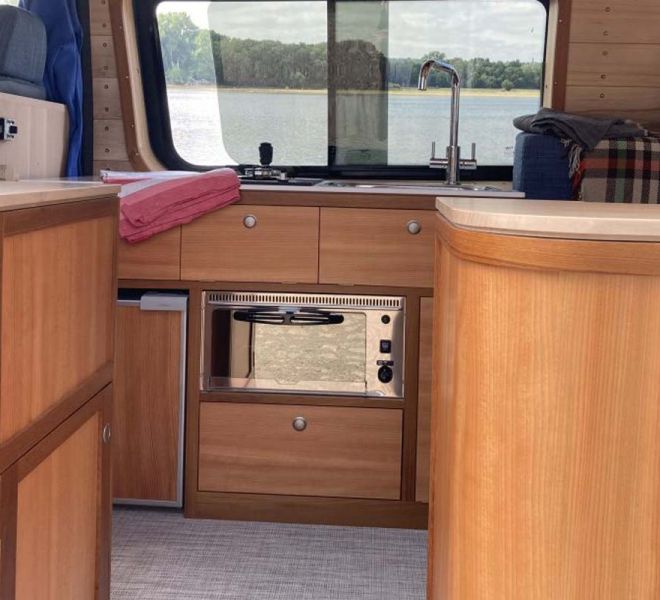The Cabinetry inside a Winby van.
When we square up to the task of converting a van, the eternal question arises of how best to lay out the van. There will be sketches, followed by the dawning realisation that whilst our houses allow for us all to lead our lives with plenty of space for us, a van will inevitable ask for compromises. Every inch of the van needs to work really hard to provide a surface, storage, or another function for our life on wheels. It’s a long process, but sooner or later a layout emerges, and once that element of the design has crossed the considerations next shift to the aesthetic of the van- how will it look, and how will it survive the rigours of two people or more living in it for an extended period of time. It will need to be capable of withstanding tremendous heat, cold weather, look amazing, unique and homely and luxurious, and will also need to cope with spills of water, tea, red wine and anything else that our experimental cooking may throw at it.
Our opinion is that a timber lining to the van is always the best solution, and we particularly like to use English Ash. It is relatively inexpensive, comes in long lengths, and has a low weight for hardwood. It is also quite a pale-coloured timber, which was always our intention to provide a lining that wasn’t too overbearing and tonally too dark.
The noble Ash tree has been part of our landscape and heritage for centuries but has recently become victim to a disease known as Ash dieback. There is rather tragically quite a good supply of this fabulous timber, so another more muted reason to use this wood. Ash timber can also be prone to colouration on the inside- producing wonderful streaks of brown timber, and using these boards as well gives the lining an individuality and character. Finally, it is a different choice from the other conversion companies whose options are normally limited to the pine cladding that is pre-machined. Our workshops are fully equipped and capable to deal with all the tasks of modern cabinet making, and we have machinery that can machine rough-sawn boards, and then sand them to a uniform and faultless finish.
Our Ash linings are machined by us to a bare 9mm in thickness, and we then profile the edges with a matching tongue and groove so they can lock in place with their neighbouring boards, to create a sealed lining. A recent discovery of ours has also been an exterior grade acrylic spray coating which amazes us with its durability. Acrylic lacquers have a flexibility to them much greater than the old school cellulose varnishes, so the timber boards can move with the seasons without the finishes cracking. We apply this finish to both sides of the board to really seal the lining, and we also add UV filters to this finish, which means that we can mitigate any damage caused by sunlight.
The result is a beautifully lined van. Unique, eye-catching and ready for an extended trip across the land you choose.
Our first van we converted produced endless discussions of how we were going to deal with the perimeter edges of the cladding. Yes, the Ash was a clear winner, but there were all the details in the corners that needed to be finished, and none more so than how we were going to deal with the reveals around the windows. I wanted to have something that looked effortlessly neat and still allowed as much light into the van as possible.
Our solution was to make these reveals around the windows out of Ash as well, and to shape them on the workshop machinery to closely follow the curved perimeter to the van window. We prefer the large bonded windows for our vans- they let in a huge amount of light and are larger than the more box-like windows available for the motor home market. Once constructed, these reveals are fixed off around the windows, and the junction between these reveals and the cladding is hidden with a simple curved teak moulding.
Before we install the cladding we will of course prepare the van bodywork, and install the insulation. We first deaden the sound with panels of bitumen waffle, which stops the large areas of the van from acting as drum heads. Next, we install solid foam insulation, together with a companion fibre product which allows the awkward areas to be stuffed with insulation too. The cladding is next, and we prefer to use screws and screw cups for this. It looks lovely, and of course, allows for the lining to be removed.
We are excited by the possibilities that we could offer customers too… I have a supplier who can provide sawn timber boards in thicknesses that will allow us to laminate them onto lightweight plywood, allowing us to offer a range of timber linings.
Our belief is that your van interior will be part of your life for many, many years, and is also something you will look at in close detail as one lies in bed whiling away the hours lost in our daydreams. This is very much within our DNA as makers- the attention to the details and the satisfaction that something we have made is made to the best of our abilities. A workshop culture that persists across the board- whether it be a dining room table, a chest of drawers, or in this case a camper van. All bear the mark of the maker and his attention to the task.


